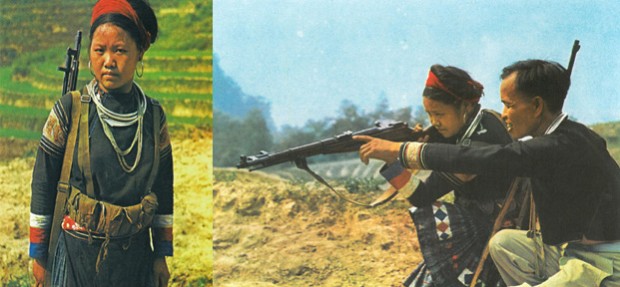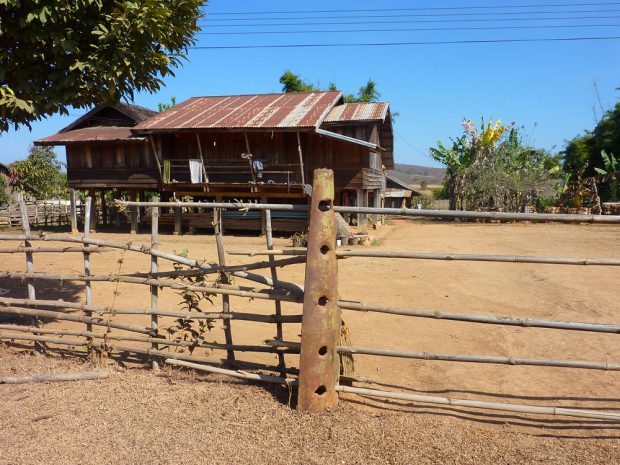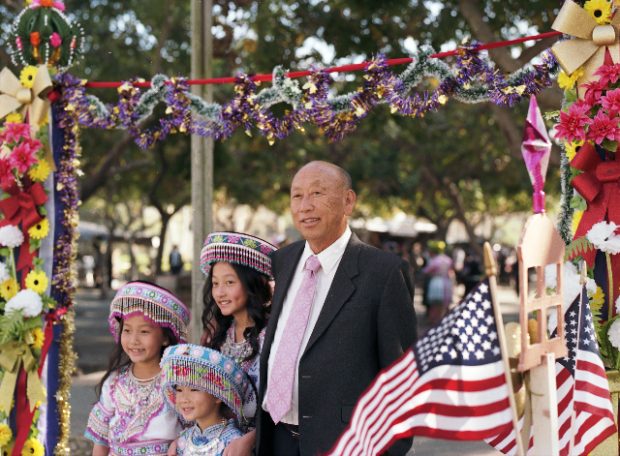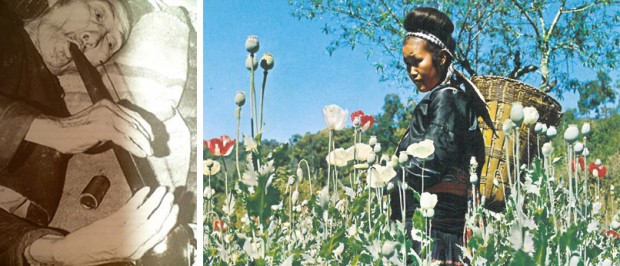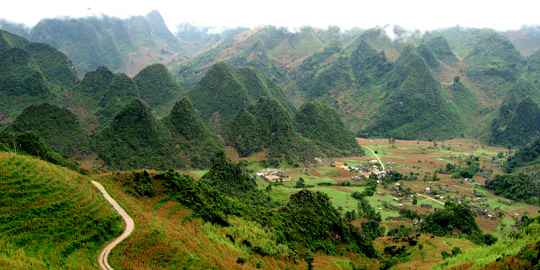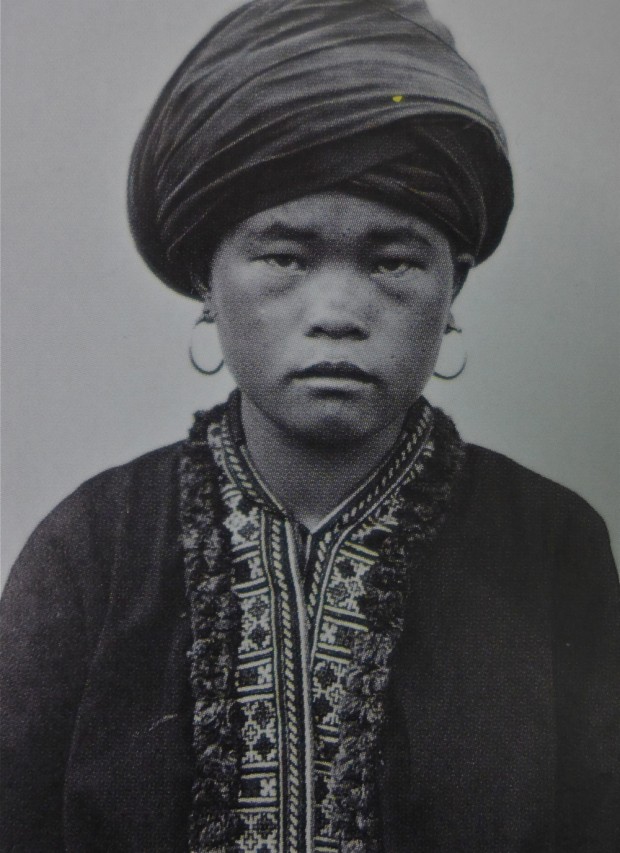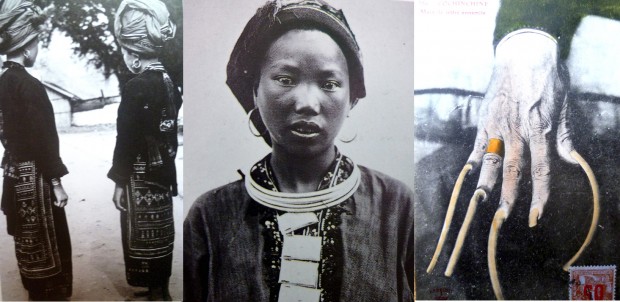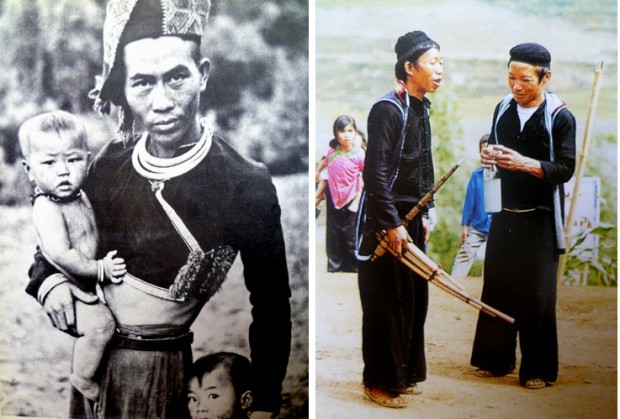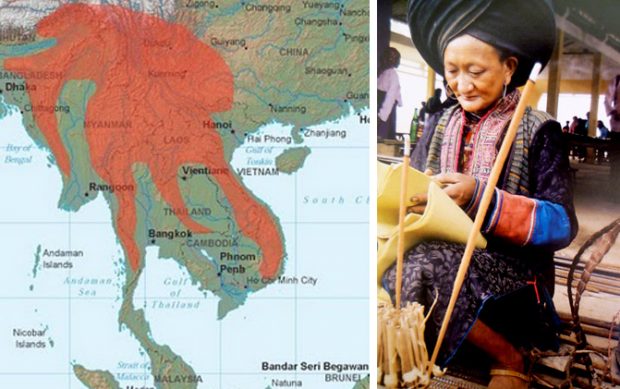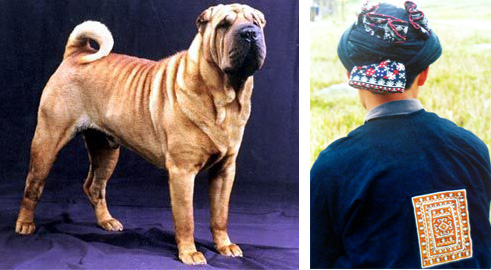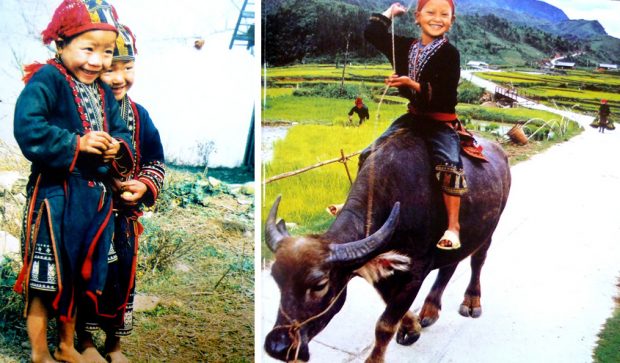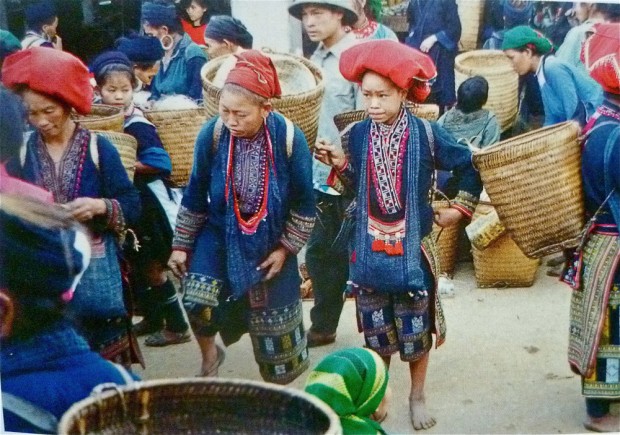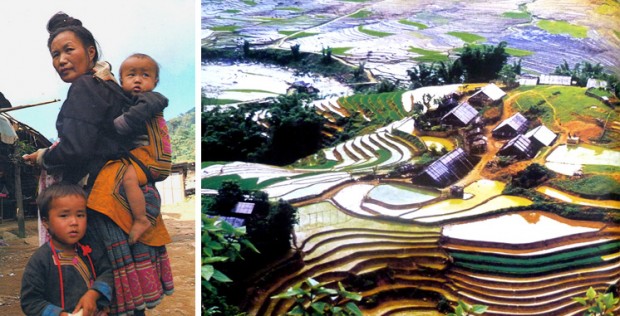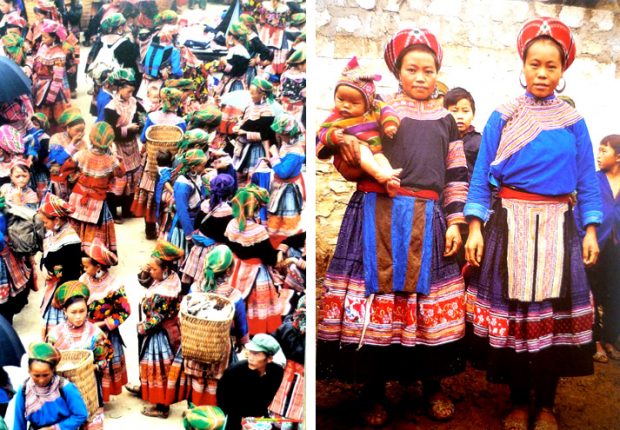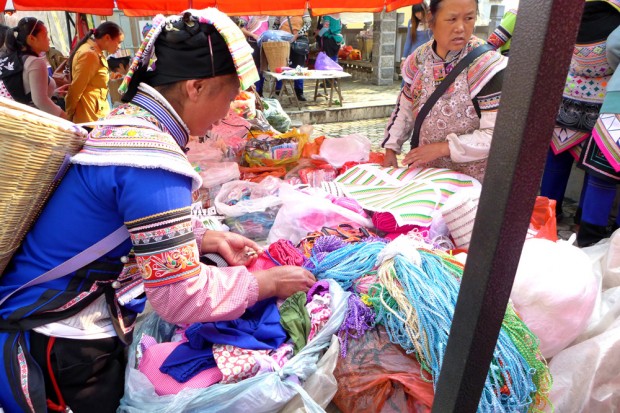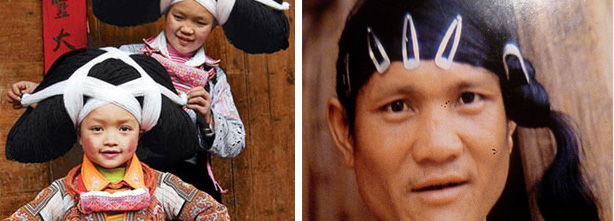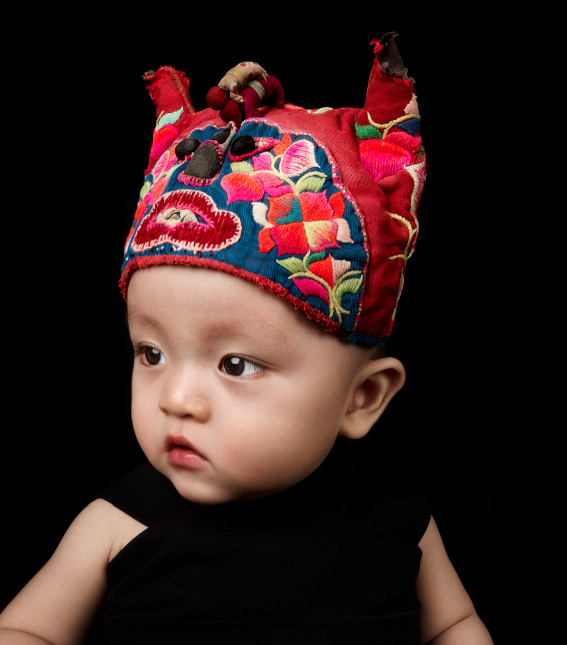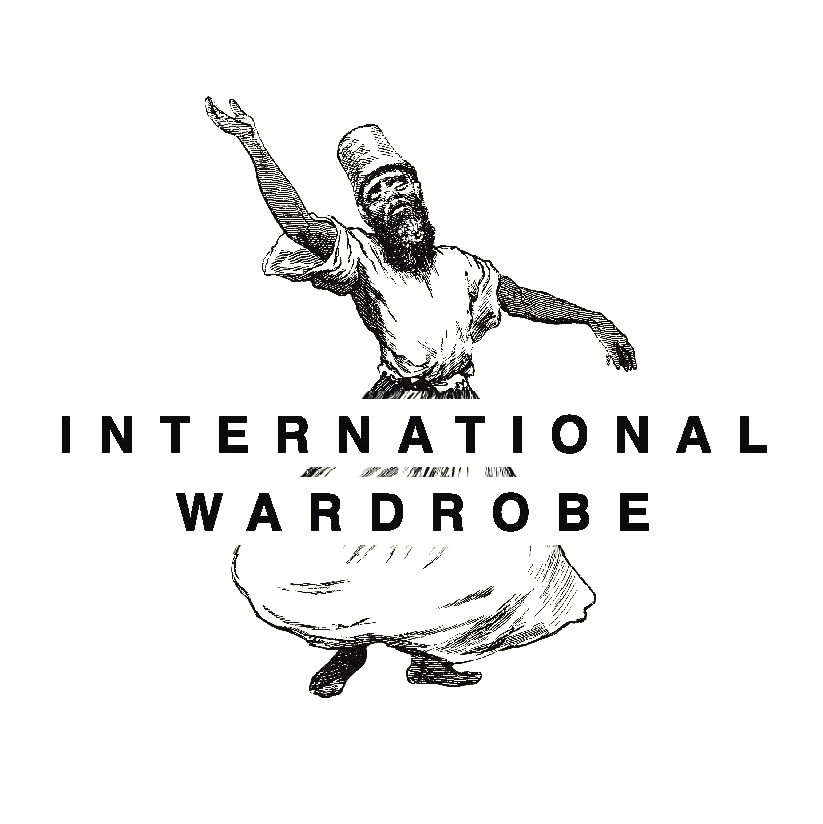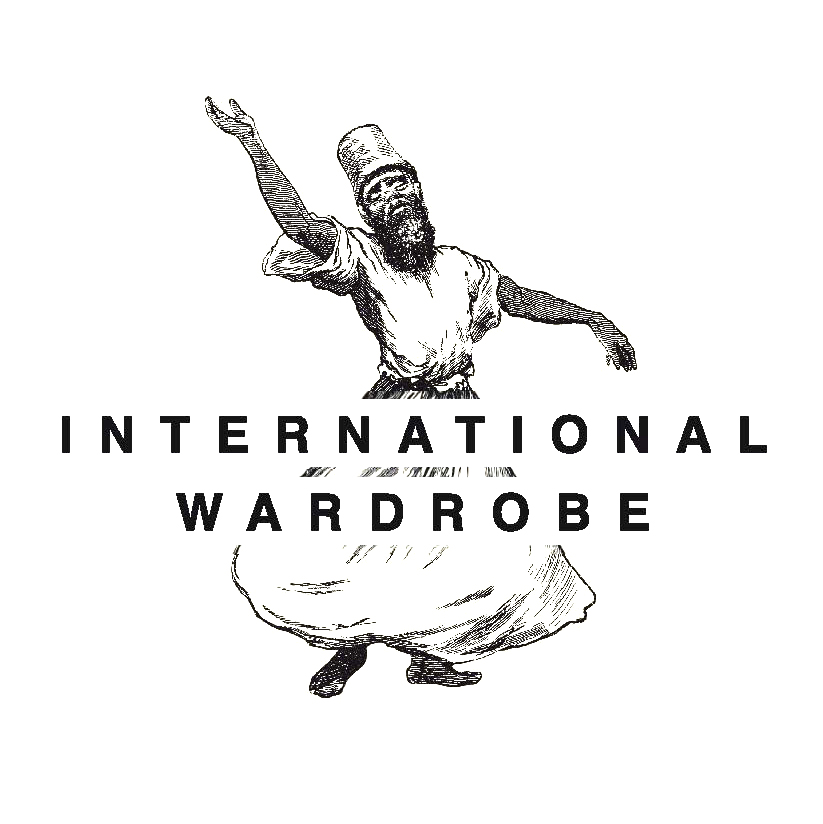When the French combined the three parts of Vietnam—Cochinchina, Annam, and Togking—with the Khmer kingdom and Laos in 1887 to form a colonial empire, they called it Indochine—or more precisely, the Union Indochinoise.
The term Indochina was coined by the French geographer Conrad Malte-Brun, and it was intended to do justice to the influence of India and China on these areas in Southeast Asia. Even in a purely geographical sense, these countries are located within their sphere of influence: bustling China above and to the right; spiritually imbued India above and to the left, and on both sides water as far as the eye can see. What great promise the name Indochina has: a colonial empire that understood how to combine East and West harmoniously, bringing together the best of these two antithetical worlds in an idyllic space. One sees endless rice paddies; farmers busy harvesting, all of them wearing non lás, conical straw hats; elegant colonial villas, fans, teakwood and baguettes, Marguerite Duras and her lovers. And add to that the succulent, damp calm of the tropics. Indochine, Cochinchina, and Cocochine—today those are names for restaurants and films, and like all clichés this one is as true as it is false.
Indochina in the twentieth century meant one thing above all: war. With the end of the colonial era, the struggle for independence began, and with it the associated dependencies on the superpowers: America, China, and Russia. It was a real battlefield in the Cold War between capitalism and communism. The countries of Indochina had to endure a chain and concatenation of military conflicts from 1941 to 1979. The drama began when the French returned to Asia in 1945 to retake Vietnam, the former colony it had to cede to Japan in 1941. It did not end until 1979, four years after the end of the Second Indochina War, with the withdrawal of the Americans from South Vietnam and the march of the Vietnamese into Cambodia (1979). In addition to the people of Vietnam and Laos, the Cambodian population was particularly affected, having been reduced by a quarter by the autogenocide of the Khmer Rouge during the four years of Pol Pot’s rule, essentially exterminating itself. It was a crime against humanity whose brutality and relentlessness bear comparison to the actions of the National Socialists during the Third Reich. As a symbol of their solidarity with the rural population, the Khmer Rouge wore as part of their uniform a red-checkered krama, the traditional shawl of the Khmer, who were among the original inhabitants of Cambodia. This piece of politicized fabric is now considered the national symbol of the Cambodians.
Understanding Indochina begins with its history (1887). In 1945 France occupied Cochinchina, southern Vietnam, to regain its footing as a colonial master—with a greedy eye on the country’s northern and central regions, the former empires with the euphonious names Tonkin and Annam. They were controlled by Ho Chi Minh and the Việt Minh, or League for the Independence of Vietnam, which was led by the Vietnamese Communists. Initially, Ho Chi Minh, who took over as leader of North Vietnam in 1945, was certainly willing to find a compromise with the French. “As far as I am concerned, I would prefer to smell French manure for five years than to have to eat Chinese food for the rest of my life.” (1)The hardcore Việt Minh had a different view, however. In 1946 Ho Chi Minh succumbed to their pressure, and the military campaign against France for a united and independent Vietnam began. In 1954 it was decided by the devastating defeat of the French in the battle for the jungle stronghold of Điện Biên Phủ, on the border between Laos and North Vietnam. Yet even the end of the First Indochina War in 1954 did not end the separation of the country into a communist north and a capitalist south. Under the Geneva Accords, the French withdrew from North Vietnam, but Laos and Cambodia became independent, free of any military alliance. That was only ostensibly the case, however.
The First Indochina War had already been a classic proxy war between the United States, the Soviet Union, and China. The American had been supporting the French since 1950. While they covered eighty percent of France’s war expenditures, North Vietnam received military and financial aid from Communist China and the Soviet Union. These interests and relationships remained even after the war ended.
In the mid-1950s, the Americans began to fear that the Republic of South Vietnam would be lost to the Democratic Republic of North Vietnam as a result of the founding of the Vietcong, which in their view would have made the domino effect inevitable: if one country becomes communist, the neighboring ones will fall as well. American interests expanded; ultimately their most urgent goals were to strengthen the anticommunists in South Vietnam and to create a regional security organization. South Vietnam had to be defended in any case, to demonstrate the credibility of the United States.
The CIA was responsible for implementing this Vietnam policy. It was able to move more freely, since it did not have to answer to the US Congress. Thus it was free to wage a war by its own rules, in complete secrecy. Even before the Vietnam War really began, the USA was fighting the war in Laos, concealed from the public, under the pretext of humanitarian aid. They fought it with their own airline, Air America; a secret military base, Long Cheng; and their own guerrilla army, led by Generals Phumi and Vang Po. Like the others soldiers, they were both members of the Hmong ethnic minority. The soldiers of this Hmong army had previously led isolated lives in the mountains. They were trained by the Thai and had never seen automobiles before. Now they were allowed to fly.
More than two million bombs fell on Laos during the Vietnam War, making it the most bombed country in the entire world. From the time the war began in 1964, the neutrality and independence of Laos agreed upon under the Geneva Accords existed only on paper. While the CIA and the North Vietnamese–supported Pathet Lao fought in the mountain regions, in the south the US Air Force used the full force of its bombs to try to destroy the Ho Chi Minh Trail, much of which was located inside Laos along its long border with Vietnam. Between 1965 and 1975, more bombs were dropped on Laos than in Germany and Japan combined during the Second World War. The ancient kingdom of Laos, with its peacefully inclined population, was destroyed by the contemptible power politics of the two superpowers with the public kept in the dark. Reparation payments to the civil population have yet to be made, even today, even though more than eighty million unexploded bombs were left behind in the country.
The Hmong were among those who suffered from the war, having been left behind unprotected among their former enemies when the Americans withdrew. Many fled to neighboring Thailand, and from there made their way to the United States thanks to resettlement agreements. Around 300,000 Hmong have emigrated thus far to Canada, Australia, France, and the United States. The largest Hmong communities outside Asia are in California, Minnesota, and Wisconsin. Influenced by a centuries-old tradition of migration, they live there in a diaspora, scattered and isolated, far from their origins. Until his death in early 2011, Vang Pao, their old, unscrupulous general in the secret war in Laos, was the leader of the “American Hmong Community.” Some of the “forgotten soldiers” who remained in Laos withdrew even further into the mountains, into the remote regions of Saysomboun. There, abandoned guerrilla troops without a future, even in the third generation they live a lonely existence of deprivation in the jungle. They are fighting a battle that no longer exists.
The ethnic minorities of Indochina were repeatedly drawn into the conflicts, despite their decentralized locations in remote mountains and jungles. In the First Indochina War, the French knew how to exploit for their own interests the mountain peoples’ hatred of the Vietnamese, who were pushing them further and further into the mountains and taking their land. In the Second Indochina War, it was the Americans who put the Hmong to their own uses in inaccessible war zones. The CIA offered the Hmong supposed protection against the bombs, which fell daily, on average one every eight minutes. They had good wages, food, and accommodations. It was a life of unaccustomed wealth, for which they would pay dearly. Thirty thousand Hmong fought for the Americans in the Vietnam War; they suffered losses at a rate ten times that of the Americans.
And then there was the opium, which the Hmong had a long tradition of growing, even from the time when they were still living in China. They planted more poppy than rice, and of course they smoked the opium they harvested themselves. Under the direction of guerrilla troop leaders from the ranks of the Hmong, and with the infrastructure and protection of the CIA, the opium trade took on completely new dimensions. Using their own aircraft or Air America, they could supply markets in Saigon, Bangkok, and Manila—with American soldiers being the main customers. The Viet Minh purchased opium in Laos as well; they traded it for consumer goods and with the money they earned they purchased Soviet weapons from the Chinese. Many alliances profited from the Hmong, but they did not.
Indochina was three countries in which many different peoples shared a common living space: ethnic minorities, colonial masters, and peoples who had lived there for millennia. In retrospect, Marguerite Duras said over her dilemma as a Frenchwoman living in a colonial empire: We were Vietnamese more than French, you see. I am realizing that now, and that it was wrong, this belonging to the French race—sorry, to the French nationality. We spoke Vietnamese, never wore shoes, lived half-naked, bathed in the river; my mother didn’t, of course; she never spoke Vietnamese; she was never able to learn it; it is very difficult. I passed my school leaving exams in Vietnamese. In short, one day I learned that I was French, you see. My mother often repeated to us: “You, you who are French … etc.” Once she went to Saigon, bringing russet apples—I don’t what they are called, the red apples? She forced us to eat them. We couldn’t swallow them; we said they were like cotton. When I was ten I was suffering from a lack of appetite in Phnom Penh; they forced me to eat steaks; I vomited the steaks; we were really natives, children of the jungle.(2)
Three-quarters of Vietnam consists of mountains and plateaus. The narrow country has two large deltas. In the north, in the Bay of Tonkin, it is the Red River, which comes from China; in the south, the Mekong River, which provides fertile alluvial land. On the edge of the latter delta lay Vietnam’s two capitals, Hanoi and Saigon. By contrast, the center of the country, the Annamite highlands, is sparsely populated. Northwestern Vietnam is one of the rawest and coldest areas in the country. More than twenty different ethnic minorities live there, including 750,000 Hmong and 680,000 Yao, who are also known as Dzao or, as in Laos and Thailand, Mien or Iu-Mien. They belong to the second largest group among the ethnic minorities in Vietnam. The Vietnamese called the hill tribes Moi, or “savages.” There are more than five million Hmong in the world. Roughly 500,000 live in China, where they are known as Miao; 250,000, in Laos; 75,000, in Thailand; and some in Myanmar (formerly Burma). A lot of them, around 900,000, live in Vietnam. They are one of Vietnam’s fifty-four ethnic groups. Laos, which is wedged in between Thailand and Vietnam with no coast, has forty-seven ethnic minorities ; Cambodia, 21. We call these ethnic groups the hill tribes or montagnards. They live in the mountainous regions of the north and in the central highlands of Vietnam, in Laos, and in northern Thailand and in Myanmar. They speak Austroasiatic, Austronesian, and Sino-Tibetan languages. The people of these three language groups came to Vietnam at different times. Several of these ethnic groups, such as the Ede and the Gia Rai, have been living in the central, fertile regions for centuries but have been driven further and further into the mountains by new waves of immigrants. But most of the hill tribes of the north immigrated to Southeast Asia from China only about 150 years ago.
Both the Hmong and the Yao belong to the Austroasiatic linguistic group, which settled the northern part of the country. The Yao regard themselves as the descendants of the mythical dragon-dog Pan Hu, who was permitted to marry a Chinese princess after her father, the emperor of China, promised his daughter and half his empire to the one who could free his country from the terrible monster threatening it. The fantastic dog accomplished that dead and was granted the emperor’s daughter. With regard to the halves of his empire, however, the emperor argued he never said whether the division would be vertical or horizontal. So the cunning emperor received the lower, fertile part in the temperate plateaus, while the dog was given the vertical, upper part with the raw, barren mountains. That is where the Yao live, but also the Hmong.
The Hmong, like the Yao, probably originated from Mongolia or Siberia. Their history goes back more than five thousand years, and until the twentieth century was for the most part passed down only orally. The Hmong settled in China around the same time as the Han Chinese. As Mongols of uncertain origin, however, they were not exactly treated well. The expanding population of Han Chinese displaced them more and more, and so they became an ethnic minority. The Chinese call the Hmong Miao or Meo. “Meo” is Chinese for “cat,” and often the suffix “tze” is added, which means something like “barbarians.” The Hmong began to withdraw into increasingly remote mountainous regions and, at the end of the eighteenth century, to northern Vietnam, Laos, and Thailand. Most of the Hmong still live in China, in Guizhou Province, though many live in Yunnan, Szechuan, Hunan, and Guangxi. The fabric of their lavish traditional costumes was called Miao brocade by the Chinese. Like the Hmong, most Yao live in China today, over a million of them, mostly in Guangxi Province. Nevertheless, they are considered an ethnic minority everywhere.
“Ethnic minorities are ethnic groups but of a specific kind: the concept of minority, which historically refers to those disadvantaged in voting and hence to those excluded from political rule, means not only ethnic difference and the features thereof in the sense of the aforementioned definition of ethnic group but also an associated disadvantage or discrimination, a status of reduced rights, reduced respect, and reduced access to resources. That makes it clear that ‘minority’ does not necessarily refer mean an actual numerical minority but rather to a relationship between groups, to the living conditions of a population. Ethnically distinct groups living in ethnically heterogeneous states and have the same rights and opportunities are ethnic groups, not ethnic minorities.“(3)
An ethnic group—which is what ethnic minorities are too, of course, if they were not “other”—is defined as an ethnic collective that has an idea of a common origin, feels a sense of belonging, and shares commonalities of history and culture. In addition, there is a collective identity with a common awareness of itself and as a judgment and attribution from outside. This identity is determined by the drawing of boundaries and demarcation from other ethnic collectives, so that ethnic groups are always connected by shared systems of relationships and institutions.(4)
Like nearly all ethnic minorities, the Hmong and Yao are deeply influenced by their lack of a nation and the many years of migration. Among other things, it has led to the formation of many different groups and subgroups within their ethnic minorities. Among the Hmong, these include the Flower Hmong, whose women were extremely colorful clothes; the Black Hmong, with their dark blue, waxed clothing; the White Hmong; the Red Hmong; and die Striped Hmong. The names come from the colors of their clothing and were initially intended to be provisional but they have stuck. Among the Yao there are thirteen different subgroups, including the Red Yao, with their red headgear, and the White Yao, who wear white trousers for their festivities and have black teeth from chewing betel nuts.
Perhaps life in impassable terrain necessarily leads to isolation; mountains and lush vegetation provide opportunities, at least, to hid and pursue the idea of one’s identity undisturbed. It is easy to understand that the group, the family, and family associations become the central places. Yet the Hmong are a people who place great value on their independence—“Hmong means free,” a phrase that the Hmong themselves like to use, is, however, more romanticizing of the actual facts. The common will of these people to differentiate themselves is expressed primarily in nonverbal form, such as the language of costumes and clothing, music and dance, arts and crafts. As peoples for whom migration is an important part of their history, the demonstration of their identity through traditional clothing, as a “mobile” part of their culture that can easily travel, is particular important.
Above all, this can be read from the uniqueness of the women’s clothing. Even in the more remote regions, the men hardly wear traditional clothing at all, but rather the Chinese massproduced short-sleeved shirts and cloth trousers of Chinese mass-produced clothing. The women do wear traditional clothing, even if they are often just prints and not genuine batik fabrics, and the embroidered trim is produced by machines. The closer they live to the Viet, the ethnic Vietnamese population, the less traditional the clothing. This reflects a kind of Vietnamization, which only the elderly do not which to take part in. But far into the mountain regions—for example, in the regions of Lao Cai or Bac Ha, near the Chinese border—traditional clothing is still worn on a daily basis.
The traditional clothing of Indochina employs rather simple sewing techniques. Its variety comes in the form of the decorations: embroidery, batik, and appliqué. The tiniest differences in the way the clothing is made—the models, the cut, and the decoration—provide information about whether the woman wearing it belongs to a certain village community or collective, above status, age, marital status, and talents. This goes so far that people say of the Yao that a man can recognize a woman’s character from the stitches of the embroidery on her trousers: her enthusiasm, her decisiveness, and her sense of taste.
Like everything else, the environment influences their traditional clothing. The wardrobes of the ethnic minorities of Vietnam near the Laotian border have much in common with one another as well as many Laotian features, and the same is true of the ethnic groups near the Chinese border, where many Chinese elements are found. The custom of women wearing trousers comes from China, as does the asymmetric fronts of the jackets many hill tribes prefer. Hmong women’s blouses reveal Chinese influence, just as the long coats and trousers of the Yao have Chinese roots. While the embroidery techniques of the Yao are influenced by China, the motifs are usually not. They revolve around themes from their lives, children, rice plants in the field, trees, or the Red River appear again and again in their embroideries. The Hmong and the Yao who live in the mountains of the north, where snow is not uncommon in winter, require more and warmer clothing than the hill tribes of the southern and central parts of the country, who are able to get by with just a sarong. Traditional clothing is also influenced by modern fashion trends. In the process, individual elements are always taken up by the collective. It cannot happen that just one woman wears something new. It is usually the younger women who become interested in something new first. Later it is then adopted by all the women, even the older ones. In any case, individuals never try to stand out.
Since 1950 there have been three main trends in the fashions of traditional clothing in Indochina: First, the availability of industrially produced fabrics, such as black cotton. The Yao and Hmong still produce their own hemp, from which many fabrics are woven for traditional costumes, but not many still do so. Today they purchase cotton fabrics and silk for special occasions. Second, the use of aniline—i.e., chemical—dyes, which are used along with indigo and other natural dyes. In order to obtain the typical indigo blue, a piece of clothing has to be dyed from ten to eighteen times. Yellow is achieved with the aid of bitter bamboo; other colors, such as red and green, have long been created with chemical aniline dyes. Third, the use of Chinese decorative elements, such as plastic beads, trim, and fasteners, which are purchased at regional markets.
There is a long tradition of trade between the ethnic groups. Because cotton cannot be grown in the mountains, the mountain peoples have always had to barter with other regions for cotton. Because the people of the north were always especially good at embroidery, they traded embroidered trim and appliqué for fabrics. The production and trade of traditional clothing was a task for the women. At the age of five or six Yao girls begin to embroider small things such as caps and shawls. By time they are ten at the latest, they are able to do it as well as their mothers. Embroidering a dress takes a Hmong woman about a month, if she works on it full-time; as part-time work, alongside taking care of the yard, the children, and trading, it can take as long as six months for her to finish.
Although tourism has been booming in North Vietnam since the mid-1990s, the souvenir market has been slow to develop. Clothing is not made for tourists but primarily for personal use. They like to take things designed for Western use and alter them. They make caps from the colors of jackets, tablecloths from long women’s coats, and, from all sorts of remnants, handbags—always a hit in Asia. In his 1988 study on the hill tribes of Thailand, the ethnologist Erik Cohen called this process “boutiquisation.”5 The term still applies to Vietnam today, even though the money derived from selling them is usually reserved for adding something to a sparse dinner table. Nevertheless, traditional clothing is lavish, especially among the peoples of the north. The Red Yao get their name from their red headgear, piled up on their heads like oversized pillows. They often decorate the borders with French centime coins; the Yao place great emphasis on property and decoration. They shave their eyebrows and hairlines, making their faces seem larger and rounder. Their traditional dresses consists of long, indigo blue or black embroidered coats for the women; for the men, a short jacket, only sparsely decorated, and plain indigo blue trousers. Both the long coats of the women and the short jackets of the men have an embroidered square on the back, between the shoulder blades, which symbolizes the “soul of Pan Hung,” the fantastic dragon-dog and ancestor of the Yao who was deceived. Although they do not weave much, the Yao are masters of embroidery. Their work is never based on a preliminary sketch but is rather created freely from memory and by hand. The colors of their traditional clothing—blue, red, white, yellow, and green—should be understood as a reference to the five colors of the brave dragon-dog. They employ their decorations, which are very well placed, according to well-balanced systems. For example, the indigo blue jackets of the Yao in Laos are decorated only with an oversized magenta band of pom-poms around the neckline. The size of the pom-poms reflects the status of the wearer. In general, it looks very simple and very elegant. Everyone attaches great value to that, even Hmong women: looking elegant.
Dressing well is considered good form and is a matter of politeness toward and respect for others. The Hmong are masters of handicrafts. This is particularly true of dyeing, with all their batik and tie-dye techniques, painting with wax, and the resulting patterns. But it is also true of embroidery, with their great penchant for narrative embroidery and detailed geometrical patterns in cross- and flat stitching and for pleating as well, as is easy to see from their many pleated dresses. It is characteristic of the Hmong that they only sew their clothes together after all the parts are embroidered and decorated. Large embroideries are reserved for festivals, while batiks are for everyday use.
Indigo blue and black dominate among the Black Hmong. Their clothing is considerably less decorated than that of other Hmong groups but it is also particularly chic as a consequence. They are the only ones who wear sleeveless jackets of dark, glossy indigo, and they wrap broad, black velvet bands around their calves for warmth, attaching them with colorful ribbons. The gloss of their jackets comes from rubbing the fabric between two stones with wax and a liquid composed of egg white and ox blood. The Flower Hmong have the most lavishly decorated and colorful clothing of Vietnam’s hill tribes and are also the most numerous. They also use batik, embroidery, and appliqué for their decorations. There are many techniques they brought with them from China, such as reversed appliqué done by hand, which they call “pa nDau,” which means “floral fabric,” even though it sometimes has no flowers at all.
The most commonly used article of clothing in all of Indochina and China is an apronlike baby carrier, which is generally very opulently ornamented. Nearly every woman among the ethnic minorities in Southeast Asia has at least one handmade baby carrier. Even when they no longer wear traditional clothing in some regions, they still often make their baby carriers and baby bonnets by hand, since they still credit their patterns with the power to bless the child and drive away evil spirits. The Chinese baby bonnets of the Hmong and Yao in particular have many symbols, promising a great future, happiness, and health and also protecting the children from evil powers. That would be nice.
Notes 1. Frey Marc, Geschichte des Vietnamkriegs: Die Tragödie in Asien und das Ende des amerikanischen Traums (Munich: C. H. Beck, 1999), 2. Marguerite Duras and Michelle Porte, Die Orte der Marguerite Duras (Frankfurt am Main: Suhrkamp, 1982). p. 62-62 3. Friedrich Heckmann, Ethnische Minderheiten: Volk und Nation (Stuttgart: Enke, 1992), 55. 4. Ibid. 5. Michael C. Howard and Kim Be, Textiles of the Highland Peoples of the Northern Vietnam: Mon-Khmer, Hmong-Mien, and Tibeto-Burman (Bangkok: White Lotus Press, 2002).
Bibliography
Cheesman, Patricia. Lao-Tai Textilies: The Textiles of Xam Nuea and Muang Phuan. Bangkok: Amarin Press, 2004.
Eberle, Marc. Amerikas geheimer Krieg in Laos: Die grösste Militäroperation der CIA. Documentary film. Germany, 2008.
Hemmet, Christine. “Traditional Costumes of the Hmong of Vietnam.”
In Through the Threads of Time: Southeast Asian Textiles. Bangkok: River Books, 2004. Lemoine, Jacques. “To Tell the Truth.” Hmong Studies Journal, no. 9 (0000): 29, www.hmongstudies.org.
Lewis, Paul, and Elaine Lewis. Peoples of the Golden Triangle. Bangkok: River Books, 2002.
Pourret, Jess G. The Yao, the Mien and Mun Yao in China, Vietnam, Laos and Thailand.
Schliesinger, Joachim. Hill Tribes of Vietnam, vol. 1. Introduction and Overview. Bangkok: White Lotus Press, 1997.
Thompson, Andrea. Textiles of South-East Asia. Wiltshire: Crowood Press, 2007.
Pictures: 1.Postcard from Halong Bay, beginning 20 Jh. 2. Old Indochina 3. Ho Chi Minh reading in the garden, 1957 4. woman from Tonkin, northern vietnam around 1910. 5 und 6. Hmong soldiers from laos, pictures: Dinh Dang Dinh 7. Fence build with parts of a bomb, plain of jards, Province Xieng Khouang, Laos. 8. Hmong from california celebrating new year 2012, Picture: Albrecht Fuchs 9. Smoking opium 10. Hmong woman harvest opium plants 11. The montains in northern vietnam 12. Red Yao from Tonkin, around 1920. 13/14. Red Yao Beginning 20 century. 15. Postcard “Cochinchine” showing a writers hand 16. In the past men liked to dressed in folk costumes, here´s a men from northern thailand in a fancy jacket 17. Black hmong from Sapa in norther vietnam have a little chat 18. The area of „zomia“ the southeast asian massif 19. Yao woman are excellent embroiders 20. Maybe Pan hu looked like this dog 21. The symbol of Pan Hu on the backside of a yao men´s jacket. 22/23. Kid´s from the red yao having fun 24. The headscarfs and folk costumes of some red yao woman in northern vietnam, near lao chai. 25. Hmong woman from laos, Picture: Choke Chai 26. Paddy fields near by sapa, lao chai, northern vietnam 27. Market days with flower hmongs in bac ha, northern vietnam 28. typical dress of the flowery hmongs end of 20 century. 29. woman of the hani doing shopping today – with industrial borders and synthetic textiles, Xinje, Honghe, Yunnan, south China 30 The “long-horned” Miao in Guizhou province, south China 31. This hmong men shows with his chic hair slide that he is still available 32. Tiger Baby Cap from china, picture: Olaf Blecker
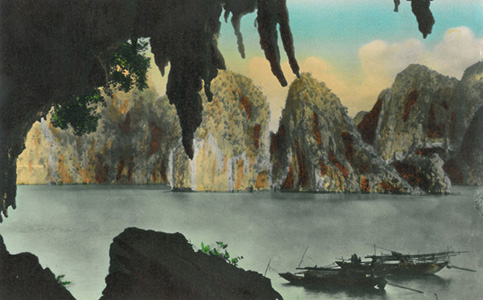
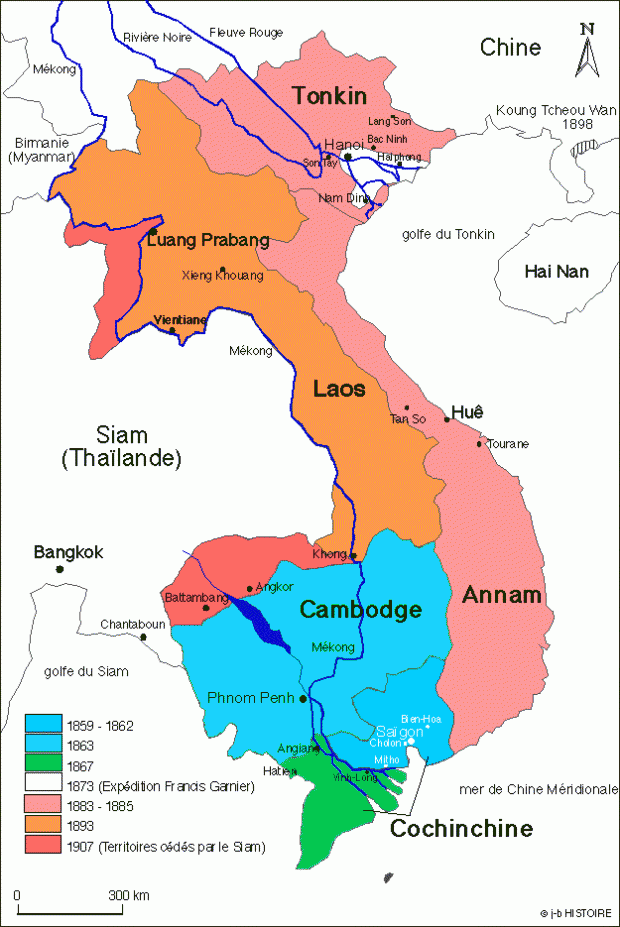
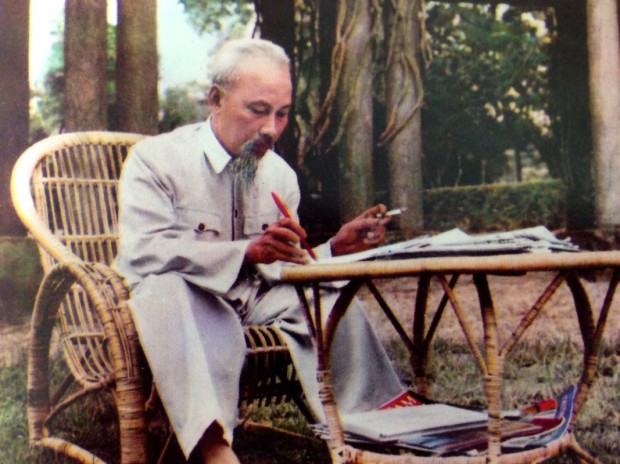
![]()
